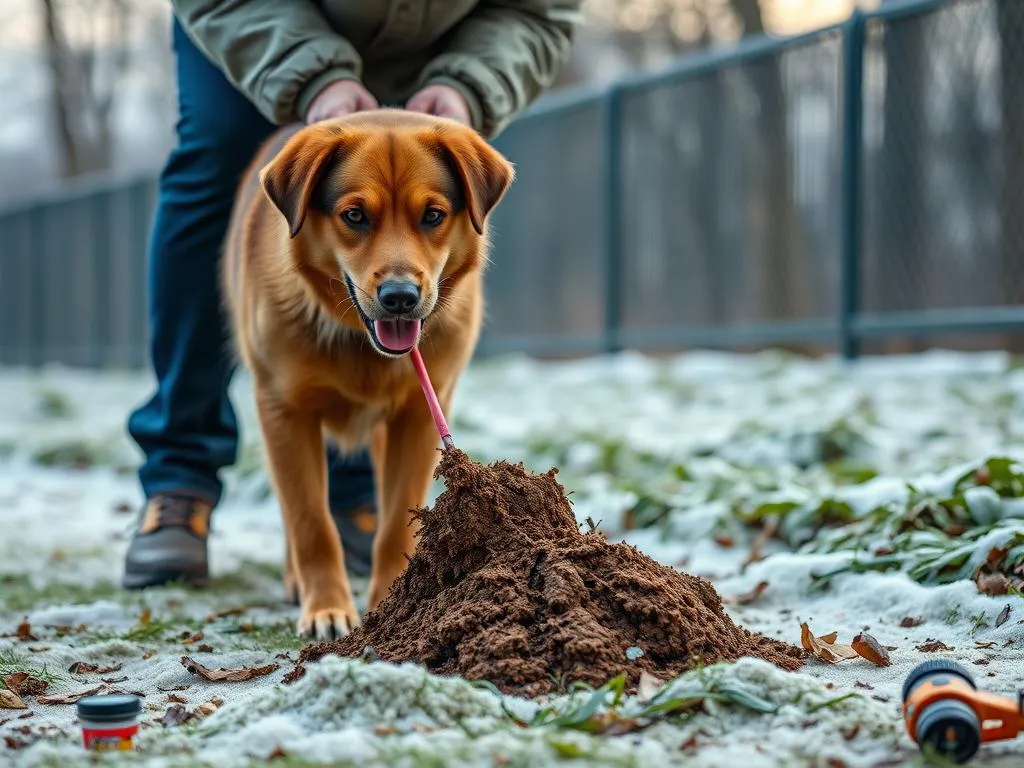
Cleaning up after your dog is an essential part of responsible pet ownership. Not only does it keep our neighborhoods tidy, but it also plays a crucial role in maintaining public health and protecting the environment. Understanding how to pick up dog poop effectively is vital for every dog owner. This guide will walk you through the importance of cleaning up after your furry friend, the necessary tools, techniques, and best practices for poop disposal.
Understanding the Importance of Picking Up Dog Poop
Health Hazards
Dog waste can harbor various parasites and diseases, posing significant health risks to both humans and other pets. Common parasites found in dog poop, like roundworms and hookworms, can be transmitted to humans, particularly children, who are more likely to come into contact with contaminated soil or surfaces. Moreover, diseases such as giardiasis and cryptosporidiosis can also be spread through feces. Therefore, picking up after your dog is crucial not only for your pet’s health but for the well-being of your family and community.
Environmental Impact
When left unattended, dog poop can have detrimental effects on the environment. Rainwater can wash feces into storm drains, eventually contaminating local water sources such as rivers and lakes. This leads to nutrient pollution, which can result in algal blooms that deplete oxygen levels in the water, harming aquatic life. Additionally, dog waste contributes to soil and water contamination, negatively affecting local wildlife. By cleaning up after your dog, you’re helping to preserve the ecosystem and protect wildlife habitats.
Community Responsibility
As a dog owner, you have a social responsibility to keep public spaces clean. Many communities have enacted “pooper scooper” laws that require pet owners to clean up after their dogs in parks, sidewalks, and other shared areas. By adhering to these regulations, you contribute to a more pleasant environment and set a positive example for others. A clean community benefits everyone, including non-pet owners who appreciate tidy public spaces.
Tools and Supplies for Picking Up Dog Poop
Poop Bags
One of the primary tools for how to pick up dog poop is the poop bag. There are several types available, including regular plastic bags and biodegradable options. Biodegradable bags break down more quickly, making them a more environmentally-friendly choice. When selecting poop bags, look for brands that are strong, durable, and leak-proof to prevent any mess during collection. Popular brands like Earth Rated and Pet Waste Solutions offer reliable options that can be easily found in pet stores or online.
Pooper Scoopers
Pooper scoopers come in various designs, making them a versatile tool for picking up dog poop. Some common types include scoops, rakes, and shovels.
-
Scoops: These are handheld devices that allow for easy collection of poop from the ground. They usually have a scoop at one end and a handle for easy maneuvering.
-
Rakes: These are useful for gathering waste from grassy areas. They allow you to collect multiple piles of poop without having to bend down.
-
Shovels: These can be effective for larger breeds or for picking up waste on hard surfaces, such as concrete.
Each type has its pros and cons. For example, while scoops may be easier to use on grass, rakes can cover more ground quickly. Choose the option that best fits your needs and your dog’s habits.
Gloves and Disinfectants
Maintaining hygiene while handling dog waste is crucial. Wearing disposable gloves when picking up poop can help protect your hands from germs and parasites. After you’re done, it’s essential to sanitize your hands and any surfaces that may have come into contact with the waste. Safe disinfectants, such as those made with vinegar or hydrogen peroxide, can effectively clean any tools used in the process.
Techniques for Picking Up Dog Poop
The Basic Method
To effectively pick up dog poop with a bag, follow these steps:
-
Prepare the Bag: Open the bag and turn the opening inside out. This will create a pouch that you can easily use to scoop the poop.
-
Scoop the Poop: With the bag still inside out, use your hand to scoop the poop into the bag. Make sure to get all of it to prevent any mess.
-
Secure the Bag: Once the poop is inside, turn the bag right side out, ensuring that the waste is sealed within. Twist the top of the bag to prevent any leaks.
-
Dispose Properly: Place the secured bag in a designated trash bin. Avoid composting or flushing dog waste unless it’s specifically designed for such purposes.
Using a Pooper Scooper
When using a pooper scooper, follow these instructions:
-
Position the Scooper: Place the scooper over the poop, ensuring the scoop or rake is ready to collect it.
-
Scoop Up the Waste: With a quick motion, scoop the poop into the collection area of the device.
-
Dispose: Open the collection area over a trash bin and dump the waste, securing the area afterward as needed.
Dealing with Difficult Situations
Picking up soft or runny poop can be tricky. In these situations, try the following tips:
- Use Two Bags: Layer a second bag inside the first to create a stronger barrier against leaks.
- Scoop Gently: Use a scooper or a strong bag to gently lift the waste without tearing it.
- Weather Considerations: If it’s snowy or raining, be prepared for messier situations. In snow, you may need to dig a little to find the waste. In rain, consider using a more robust bag that won’t tear easily.
Best Practices for Dog Waste Disposal
Where to Dispose of Dog Poop
Proper disposal of dog poop is essential. Most dog waste should go into trash bins. However, some communities offer dog waste composting solutions. Check local regulations regarding disposal methods, as improper disposal can result in fines.
Alternatives to Plastic Bags
With increasing awareness about environmental issues, many dog owners are seeking eco-friendly alternatives to traditional plastic bags. Here are some options:
-
Biodegradable Bags: These bags break down more quickly than standard plastic, reducing environmental impact.
-
Composting Systems: Certain systems allow for dog waste to be composted safely, though it’s essential to follow guidelines to ensure pathogens are managed correctly.
-
Dog Waste Digesters: These are in-ground systems designed to break down dog waste, turning it into compostable material over time.
Training Your Dog to Eliminate in Designated Areas
Setting a Routine
Establishing a regular potty schedule for your dog can make the process of picking up after them easier. Take your dog out at consistent times throughout the day, such as after meals or first thing in the morning. This consistency will help them learn when and where it’s appropriate to eliminate.
Positive Reinforcement Techniques
Training your dog to go in specific areas can simplify clean-up efforts. Use positive reinforcement by praising and rewarding your dog when they eliminate in the designated spot. Consider using treats, verbal praise, or playtime as rewards to encourage this behavior.
Conclusion
Understanding how to pick up dog poop is vital for every dog owner. By recognizing the importance of this task, utilizing the right tools, and following effective techniques, you contribute to public health and environmental protection. Implementing the best practices for dog waste disposal and training your dog can further ease the process. As responsible pet owners, it’s our duty to keep our communities clean and safe for everyone.
FAQs
What if I forget to pick up after my dog?
It’s crucial to hold yourself accountable. If you forget, try to return and pick it up as soon as possible. Many communities have resources and reminders to help dog owners remember their responsibilities.
Are there health risks to my dog from picking up poop?
Handling your dog’s waste poses minimal risks if you take precautions like wearing gloves and washing your hands afterward. Always ensure your dog’s health is monitored, particularly if they show signs of gastrointestinal issues, which can be related to parasites often found in feces.
Can I train my dog to use a specific area for potty?
Yes! With consistent training and positive reinforcement, you can teach your dog to eliminate in designated areas. Start by taking them to the designated spot regularly and rewarding them for going there.
By following these guidelines, you can be a responsible pet owner and contribute to a cleaner and healthier environment for all.









